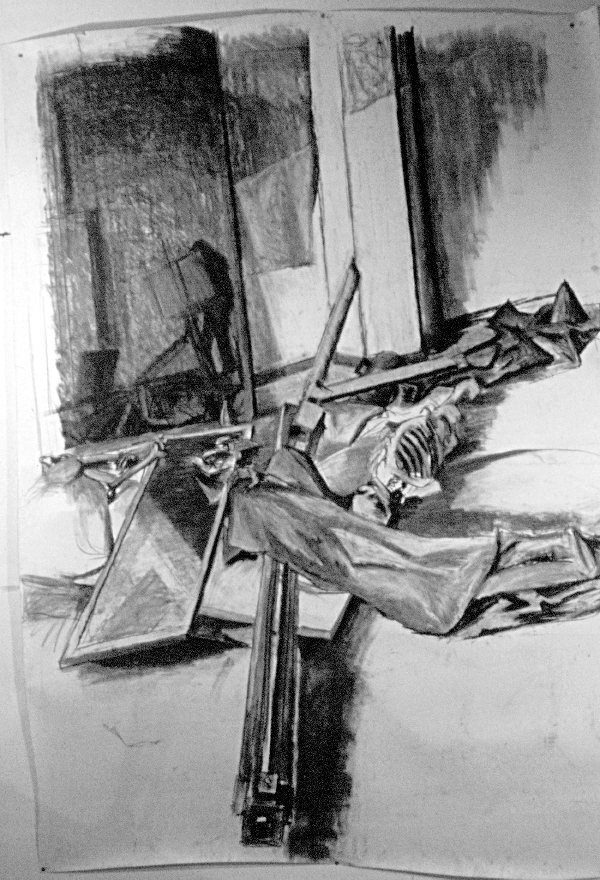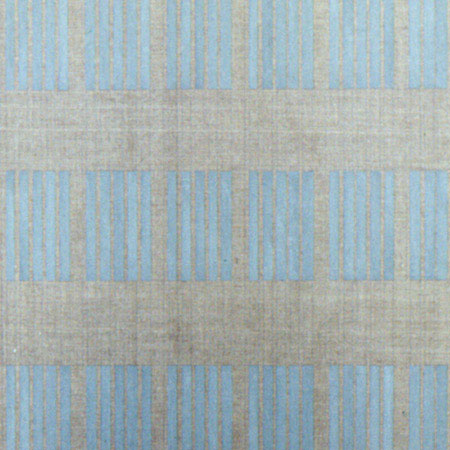

Paintings
The first year, I tried expressionism, and film, and we had a small amount of life drawing. I enjoyed the life drawing and the way that it dealt with the illusion of space on a two dimensional surface. This drawing is interesting to me now. It has a particularly complex 3D space, taken into a further dimension by the mirror at the back left. It’s hard to work out what the objects are, but it’s the sense that it represents something real, even if unrecognisable, that means something to me.
I came across this painting in the National Gallery in London (The Battle of San Romano by Uccello). Uccello was one of the founders of perspectival space in painting and he really went to town with the angles and lines of force in the lances of these soldiers. I did my own expressionist version.….
Here there is a particular focus on movement and colour. This focus crops up again in different forms later in my career.
I did quite a lot of expressionist work at this time. Like the Pollock in the first story chapter, these paintings spread themselves evenly over the surface - there's no attempt to delineate separate areas and no attempt to represent the world except in a very abstract way. In fact these paintings are still very much about paint and its application.
This one falls into the same category, in the end, but it had an interesting genesis. I did it with a Peruvian friend of mine. We painted it in turns and while one was painting, the other filmed the process with a movie camera, using stop-framing (only taking one frame at a time). It’s a kind of animation. So the painting ended up with a particular face, but in the process of doing it, we had changed it a thousand times.
At the beginning of my second year, I suddenly had an inspiration. I started painting over my earlier expressionist paintings with a grid. This is the same painting as the one in the last slide, with bars of reddish colour painted over the top.
I was fascinated by the way the two fields interacted at the boundaries, and how, psychologically, the space became unstable, flipping between deep space and flat surface.
I did a few of these paintings, and suddenly felt like I had found something that suited me. It was part psychology, part pure sensation, but still very much to do with painting.
Over the next year or so I was very productive and enjoyed myself much more than when I was doing the expressionist work. I produced lots of minimal works in paper, cutting fine grids in card and working mostly with subdued colour. This one is drawn with graphite onto scored paper so that the paper folds up and becomes three dimensional.

The areas in these grids had taken the place of the expressionist marks they were superseding, setting up a three dimensional tension. It was still spread evenly, even more evenly, over the whole surface. Not a sign of representation here, but still a real and tangible illusion of space.
Next chapter: The Slade and Venice